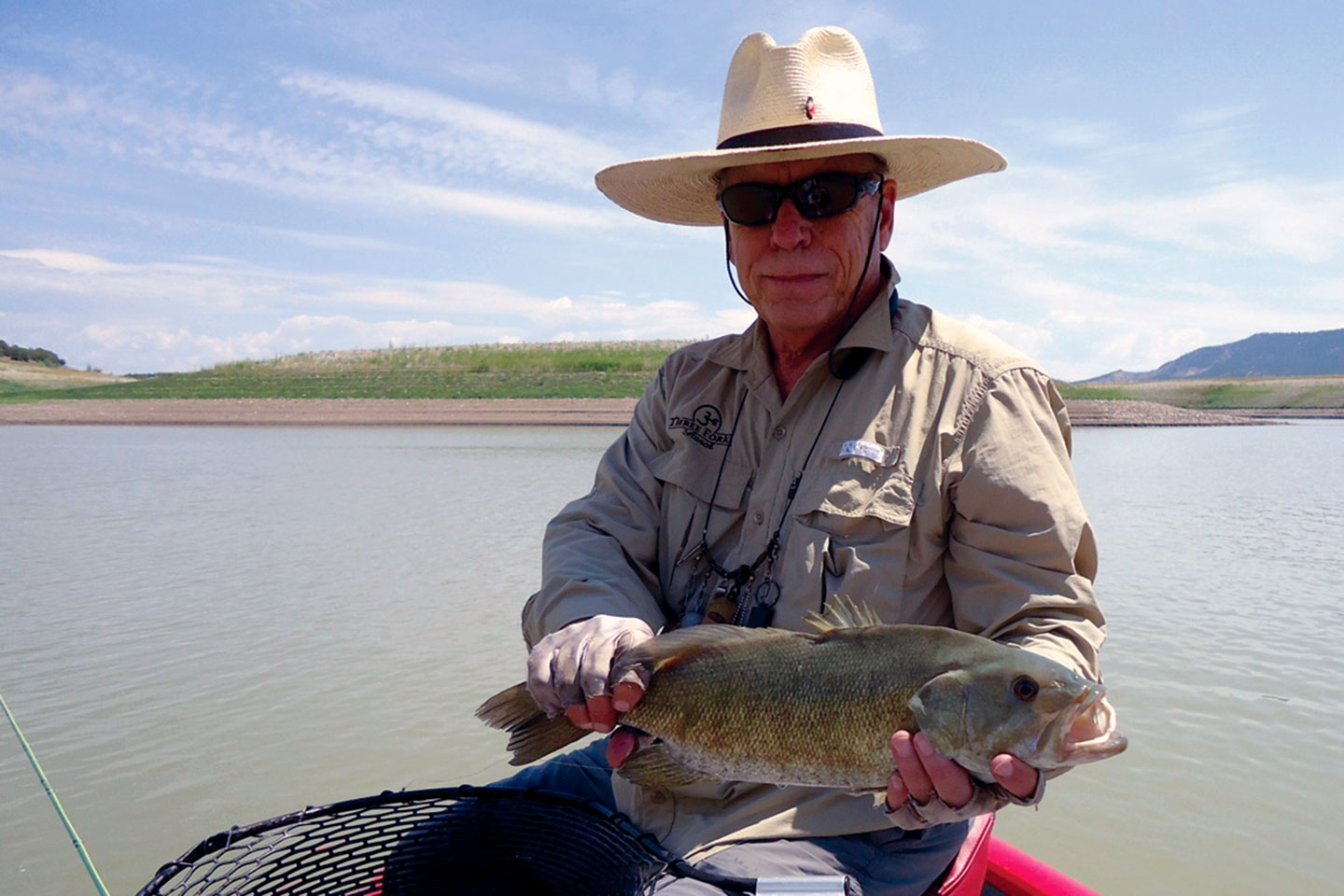The vast majority of people with whom I fly fish are usually in a hurry to get on the water and start casting. They are certainly fun to fish with. But my favorites are the ones who walk slowly, stop at the edge of the water, survey what’s going on around them, then tie a fly on. I learned this from another guide, who admonished me for being in a hurry and making too much noise. As I recalled that friendly lesson, I thought of the number of air-breathing animals I’ve had experiences with by being quiet and slowing down.
While taking my time booting and suiting in a parking lot at Yellowstone National Park, a herd of bison slowly walked past me on the way to who knows where. You don’t want to spook these animals, so sitting quietly and enjoying my morning cigar was a good idea. The next event occurred in the same park. I was fly fishing a nice pool when a cow elk appeared on the bank. I remained quiet and witnessed an amazing sight. The elk liked my pool and decided to make it hers. She waded in, got shoulder deep, then rolled in the pool to cool off. She climbed out on the other bank, shook off, then laid down to watch me cast.
Bears, whether in Alaska or Lime Creek, are always interesting. Once, while approaching one of my favorite areas of Lime Creek, I witnessed a truly amazing bear incident. A bear was bobbing for apples that were coming downstream from a truck full of Granny Smith apples that had missed a turn and dumped its entire load into Lime Creek. I stayed quiet and enjoyed watching the bobbing bear. He eventually saw me, got on the bank, and gave me a look that said, “Don’t even think about bobbing in this spot.”
By staying quiet I’ve had moose, north of Silverton, slowly walk across the river heading for a shade tree to lie under. In the same area, while casting in a beaver pond, I had a beaver swim to within five feet of me. Once he saw me it was amazing how quickly he headed in the opposite direction.
Ponds and small lakes are always fun to watch air-breathing wildlife when fly fishing. While fishing on a small pond in Tennessee, I had a small turtle swim up to my fly, then took it. He didn’t stay on long but had a good pull. On a lake north of Durango I was fishing close to a mother duck and her ducklings. I wasn’t paying much attention to them when suddenly a duckling bolted from the pack, made a bee line to my fly, and ate it. He quickly spit it out and swam back to mom. I can only imagine the lecture she delivered to the duckling about eating strange food.
Birds, in general, can provide great entertainment. I’ve told you the story of a Camp Robber sitting on my rod as if it were a tree branch. Again, had I been in a hurry, the bird would not have been able to land on my rod. Birds in large numbers, in flight, swooping to eat bugs on the water and in the air are entertaining to watch. They’ll also point to where the fish are.
One day, on the San Juan River, I was fly fishing with both of my children. My daughter, while making a cast, had a swallow eat her fly. He didn’t spit it out. She begin yelling at my son and me to come help her land the bird, but we were laughing too hard to help.
I’ve saved the best story for last. While standing on the bank of a river in Tennessee, trying to figure out what to tie on, I noticed a heron standing about ten feet from me. I didn’t think much of it, made a few casts and caught a fish. Suddenly the heron left the bank and swooped right to my fish. He hit it, but didn’t knock it off. He then landed on a log across the river and watched me fish. I caught another fish, but kept the rod low so the bird couldn’t get it. The bird left the log, flew right at me, missed me by two feet, then sat down on the bank to see if I landed it. I did and quickly put it back in the water.
Fly fishing is the greatest sport I can think of. When you are quiet and slow down, what you see can be amazing.

